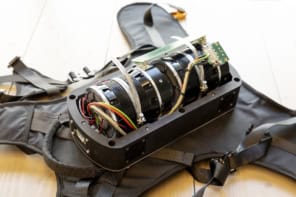
Scientists in Africa are being urged to support construction of their continent’s first synchrotron light source. The call to back plans for an African light source has been made by Herman Winick of the SLAC National Accelerator Laboratory, who is speaking this week at a meeting of the American Physical Society in Texas. Winick first unveiled his vision for such a facility last year and believes that, if built, it could help researchers in Africa to tackle some of the continent’s big issues, such as Ebola and other life-threatening diseases.
There are almost 50 synchrotron light sources in 23 different countries around the world, but Africa is currently the only habitable continent without such a facility. These machines work by accelerating electrons to high energies and then injecting them into a circular storage ring where they emit powerful beams of X-rays. The X-rays can then be used to study the structure and properties of materials in a range of disciplines, from condensed-matter physics to biology.
Early days
Although the African light source is still in the early stages of planning, Winick anticipates that it would have an energy of around 3 GeV. That is similar to other existing facilities such as the Laboratório Nacional de Luz Síncrotron in Brazil, which was the first synchrotron to be built in the southern hemisphere and is currently the only light source operating in Latin America.
Winick wants the African facility to be modelled on the SESAME light source, which is currently being built near Amman, Jordan. Costing $110m, SESAME will open to users next year and, in addition to carrying out top-quality science, seeks to build bridges between researchers from 10 nations in the Middle East and beyond, including Egypt, Jordan, Iran, Israel, Pakistan and Palestine. “Africa should follow the SESAME model,” Winick insists.
Taking ownership
Researchers working on plans for the African light source have already established an interim steering committee, which will help to set up a more permanent international advisory committee to oversee the formation of a scientific case for the synchrotron. “The plan is to bring together those working on synchrotron radiation in Africa,” says Winick, who serves on the interim steering committee.
One potential host for the African light source could be South Africa, which already has around 40 synchrotron users in the country and has been considering hosting such a facility for the last decade. Those plans were boosted in 2012, when scientists on the country’s Synchrotron Research Roadmap Implementation Committee submitted a proposal to the government, followed by a more detailed business plan in 2014.
Role for the ESRF
South Africa is also an associate member of the European Synchrotron Radiation Facility (ESRF) in Grenoble, France, paying around 0.3% of its budget. Indeed, Winick thinks that the ESRF could play a similar role in supporting the African light source as the United Nations Educational, Scientific and Cultural Organization (UNESCO) did in getting SESAME off the ground – namely by bringing together all of the founding members to form a governing council.
The next stage for the fledgling project is for the interim committee to meet in November at the ESRF, in what Winick dubs “t = 0” for the African light source. Winick now calls on researchers across the continent to get behind the project. “They need to get involved and take ownership of it,” he says. The path is unlikely to be quick, with Winick thinking that it will take at least another 15 years before the facility is open for business.



